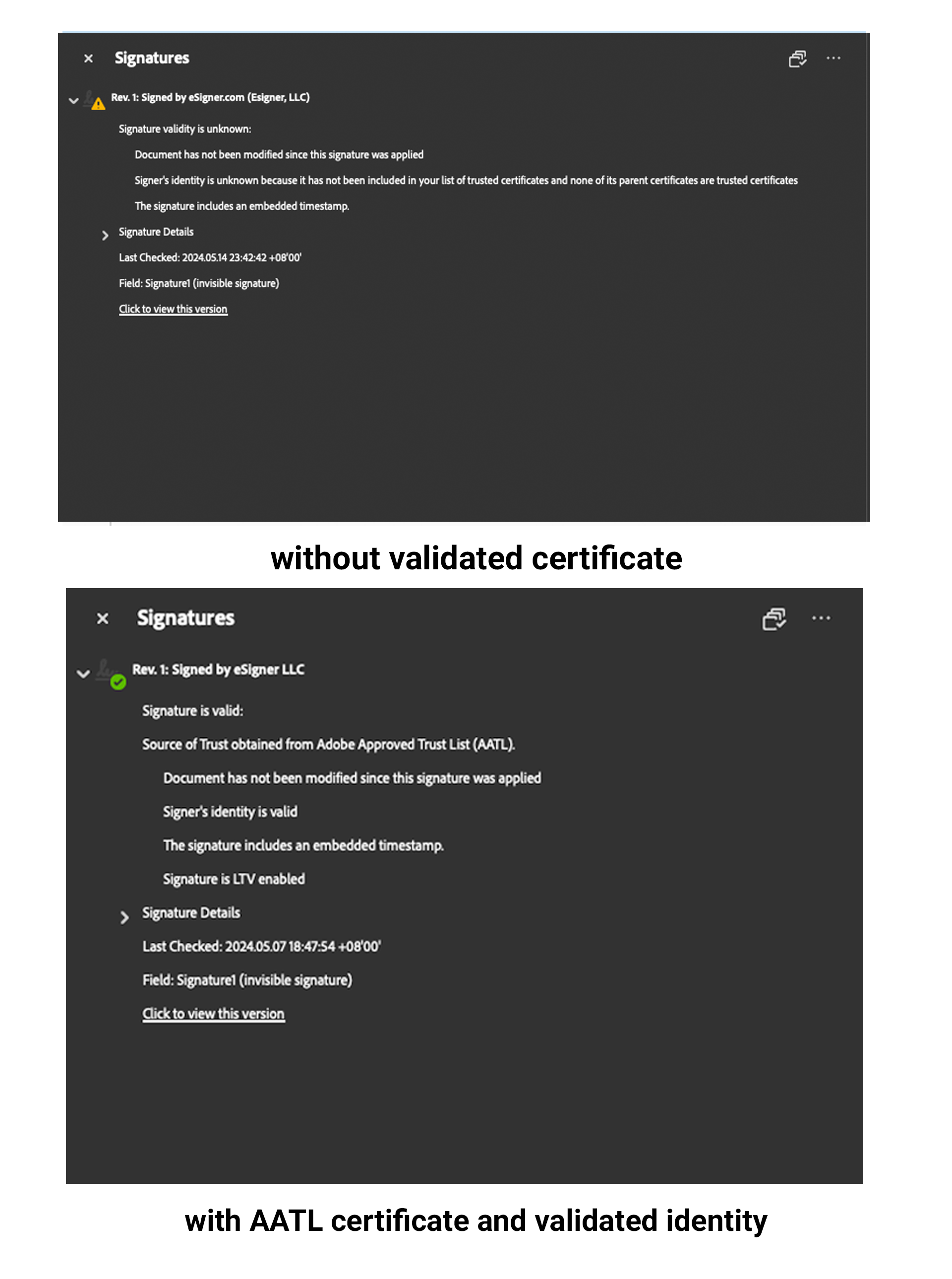Why Transition to eSealing?
eSealing provides the legal validity, security, and workflow efficiency needed to process documents at the speed and scale of digital business. Transitioning from wet ink signing to eSealing enables significant cost savings, fraud prevention, and compliance with digital signature regulations.More companies accept and require digital signatures on various business documents, ensuring continued growth and adoption. Pre-emptively implementing eSealing solutions helps companies readily adapt to the expanding digitalization of workflows.
Standard documents that benefit from authenticated protection via eSeals include:
- Purchase orders
- Invoices
- Sales contracts
- Employee onboarding forms
- Medical records
- Banking documents
With eSealing, these high-volume documents can be rapidly, digitally signed to prevent threats like fake invoice scams and fraudulent change order requests that have cost organizations millions.
How Does an eSeal Enhance Document Security?
eSealing levels up digital signature technology by allowing an individual to sign a document on behalf of an entire organization. A single certificate issued to the company can be used by multiple authorized users to seal documents with the organization’s authenticated identity. This is particularly useful for high-volume documents vulnerable to fraud, where manual digital signing is impractical.
Implementing eSealing: Integration and Automation
For organizations looking to implement eSealing, SSL.com provides two main components: a document signing API that is a RESTful service, and a document signing command line tool. These tools allow companies to automate the signing of thousands of documents in a secure and efficient manner. By sending only the hash of the document over the wire, eSealing ensures that the full document does not leave the company network, preserving confidentiality and security. For C-levels and other designated staff at your company, eSealing certificates are provided with cloud-based signing platforms such as eSigner.com. The account administrator can issue credentials to multiple authorized employee representatives, allowing them to share access to the same organizational eSealing certificate. This enables improved coordination and logistics in high-volume document processing. Through the use of a signing operation API, automated eSealing can be integrated into other document workflows and accounting systems, including Adobe Acrobat Sign. This seamless integration ensures that digitally signed documents are protected and legally binding, while also streamlining your organization’s document processing workflows.How eSeals Securely Bind Documents
When an organization uses an eSeal, a digital signature is created by hashing the document’s contents to generate a unique digital fingerprint. This hash is then encrypted with the organization’s private key, and the resulting signature can be validated with the corresponding public key. The X.509 certificates associated with these keys confirm the organization’s identity, ensuring that the signature is valid and the document has not been tampered with. This cryptographic process provides tamper evidence and prevents forgeries, significantly improving upon traditional ink signatures.
Public Key Infrastructure (PKI) provides the underlying framework for eSealing certificates. Compliance standards for certificates and digital signatures are set by Adobe AATL program and other certificate authority standards bodies. Certificate authorities are then audited against these standards to be included in the trust stores of Adobe and other document companies.
Adobe Trust and eSeals
Adobe PDF readers verify the authenticity of digitally signed documents when the issuing certificate authority is included in Adobe’s Approved Trust List or AATL. When a document is signed using an eSeal certificate from a trusted Certificate Authority (CA) like SSL.com, Adobe PDF Readers display a green check mark indicating that the document’s signature is valid and that the signer’s identity has been verified by an Adobe-trusted certificate authority. This Adobe trust store verification further enhances the security and reliability of eSealed documents, providing recipients with visual confirmation of the document’s authenticity. However, to ensure that eSealed documents are legally binding and enforceable, they must also comply with relevant legal and regulatory requirements, which vary by industry and region.
Compliance with Legal and Regulatory Standards
In many industries and regions, electronic documents and digital signatures must comply with specific legal and regulatory requirements to be considered valid and enforceable. Some key compliance standards and regulations related to eSealing include:
- eIDAS (Electronic Identification, Authentication and Trust Services): The EU regulation provides a framework for electronic identification, authentication, and trust services, including digital signatures. eSeals that meet the requirements of eIDAS are considered legally binding within the EU.
- ESIGN Act (Electronic Signatures in Global and National Commerce Act): This U.S. federal law grants legal recognition to electronic signatures and records, provided they meet certain requirements. eSeals can help organizations comply with the ESIGN Act by providing secure, authenticated digital signatures.
- UETA (Uniform Electronic Transactions Act): Adopted by most U.S. states, UETA establishes the legal equivalence of electronic records and signatures to paper-based counterparts. eSeals can facilitate compliance with UETA by enabling secure, verifiable digital signatures on electronic documents.
- ISO 32000: This international standard specifies the PDF file format, including requirements for digital signatures. eSeals that adhere to ISO 32000 ensure compatibility and interoperability across different platforms and software.
By implementing eSealing solutions that comply with relevant regulations and standards, organizations can ensure that their digitally signed documents are legally valid and enforceable, facilitating secure and efficient electronic transactions.
Use Cases Best Suited for eSeal
Standard high-volume use cases well suited for transitioning from inefficient wet ink signing to streamlined eSeal workflows include:
- Accounting and billing
- Sales contracting and agreements
- Onboarding agreements
- Document archiving
- Securing online form submissions
In regulated industries, eSeals also provides compliance benefits to satisfy official demands for valid digital signatures:
- Healthcare
- Document management and storage
- Banking
- Government
- Engineering & Manufacturing
How Can You Get eSealing?
Those with use cases needing new implementation of eSeal-enabled Organization Validation (OV) certificates can contact the SSL.com support team at sales@ssl.com to discuss tailored solutions fitting their document signing workflows.
Contact our sales team to learn more about implementing this solution in your organization.

